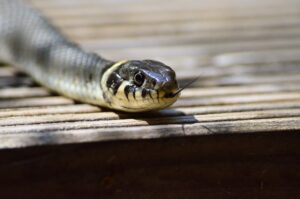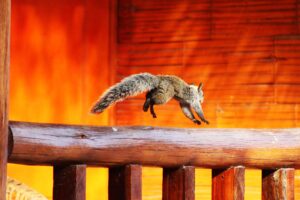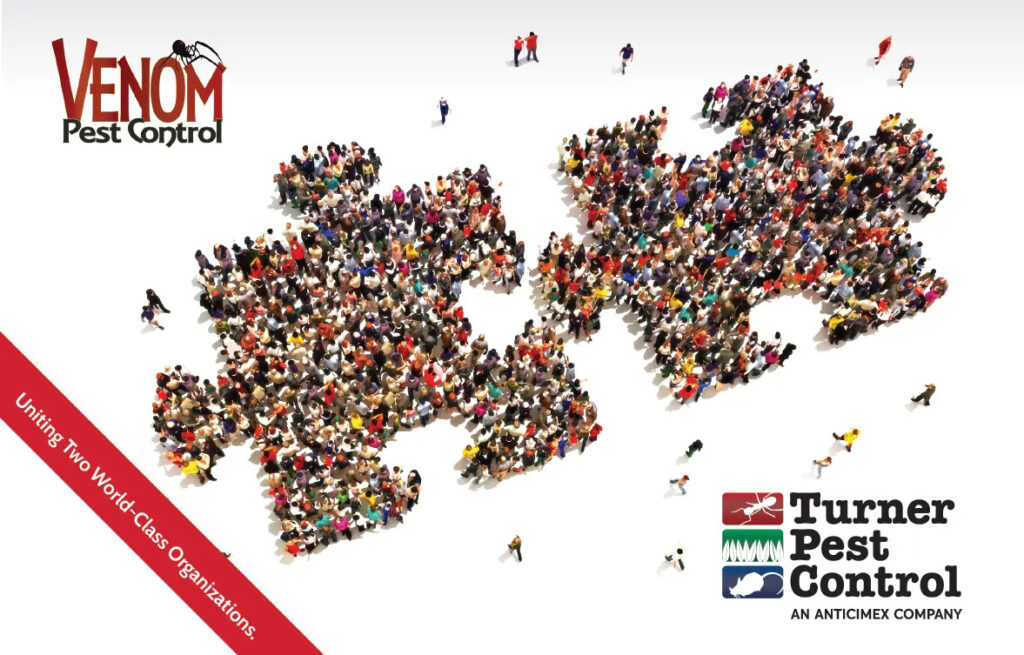When the weather is frightful or predators are near, animals seek shelter. Unfortunately, that shelter could be your crawl space, a common feature in Florida homes. This narrow space between the ground and the first floor of your house is the perfect spot for animals to nest and seek refuge. They can even grab a convenient bite to eat from your trash cans, pet food bowls, and bird feeders.
Getting rid of animals in a crawl space can be tricky, as there are many risks involved, like:

- Diseases – Wild animals in a house or crawl space can infect humans with harmful germs that can cause serious illness.
- Injuries – Animals may bite and scratch if threatened when you try to remove them.
- Legal Repercussions – Certain wildlife is protected federally by the U.S. Fish and Wildlife Service. In Florida, the Florida Fish and Wildlife Conservation Commission handles state-level conservation efforts. Improper removal could result in hefty fines and penalties from one or both of these regulatory agencies.
Each situation is unique, so it’s usually best to contact an experienced wildlife removal company. They can remove animals and safeguard your property against new and returning intruders. However, there are some actions you can take yourself to protect your crawl space against these uninvited guests. Keep reading for some insight into why wildlife might get in your crawl space and how to keep animals out from under your house in the first place.
What Kind of Animals Live In Crawl Spaces?
Opossums, moles, snakes, squirrels, bats, armadillos, raccoons, mice, and rats are all animals that might choose to live in a crawl space. If you’re wondering, “What animal is burrowing under my house?” consider the following signs of each creature.
- Opossums – Dark, sheltered, and near ground level are the traits opossums look for in a potential home. These traits, unfortunately, describe most crawl spaces, too. Opossums also seek out moisture, so they will find your crawl space extra appealing if water is leaking in. They will eat almost anything—from bird seed to garbage—and are most active at night. You may hear scratching sounds beneath your floors from an opossum in your crawl space, accompanied by unpleasant smells from their waste.
- Moles – These mammals can tear through your yard before you even realize they’re there. In fact, moles can tunnel up to 18 feet (5.4 meters) per hour. They are one of many animals that burrow under concrete and can even dig right into your crawl space. If you’re seeing raised mounds of dirt on your lawn or feel areas of extra-squishy soil under your feet, you may have a mole infestation. Moles like to eat insects, earthworms, and grubs, so their presence may indicate a high pest count in the soil surrounding your home.
- Snakes – Like most reptiles, snakes are cold-blooded, meaning they must move to a warmer or colder environment to regulate their body temperature. If it’s too hot outside, a snake may seek out the cool darkness of a crawl space. The biggest concern with snakes is whether or not they are venomous, as venomous snake removal must be handled delicately. Stay knowledgeable of venomous snakes in your area to keep on your guard (Florida, for example, has six known species of venomous snakes).
- Squirrels – Squirrels sometimes find that crawl spaces are excellent for food storage. You will likely see or hear them moving about when the sun first comes up and when it sets. Chew marks on wood, pipes, wiring, or even aluminum siding may indicate a squirrel has taken up residence nearby. Squirrels need to gnaw regularly to file their teeth down, as their teeth never stop growing.
- Bats – You’ll spy bats leaving their home around dusk, as most species of bats hunt for food at night. Their urine has a distinct smell of ammonia, which is a common ingredient in many household cleaning products. These flying mammals like to roost in various places, but a crawl space is a prime underground choice.
- Armadillos – Armadillos like to burrow to make dens and find food, like insects and earthworms. They tend to dig around heavy vegetation, like gardens and flower beds, in search of this food. Overturned dirt and shallow holes around your crawl space that are a few inches deep and three to five inches wide may be from an armadillo.
- Raccoons – The raccoon is one of the more formidable opponents in wildlife removal. Studies have shown that raccoons are well-known for their intelligence and problem-solving abilities. Plus, their paws are pretty dexterous, which allows them to easily work their way into your crawl space with enough motivation. You’ll probably only see these ring-tailed rodents at night, as they are nocturnal animals. If you keep waking up to knocked-over trash cans in your yard, raccoons may be the culprit.
- Mice – These tiny rodents can slip through a hole or crack no bigger than ¼ inch. They like to take up residence in crawl spaces, as this gives them easy access to all kinds of pipes and tunnels to the rest of the house. Mice produce a lot of waste, so their small droppings are usually the first noticeable sign of an infestation. They can also reproduce very quickly with short gestation periods of 21 days or less, so prompt removal is crucial before a mouse problem becomes a mice problem.
- Rats – Rats are larger than mice, but they can still squeeze through small cracks and holes around ½ inch. To tell the difference between rats and mice, if you spot one, remember that adult rats can get up to between nine and 11 inches in length (not including tail length), while mice usually only grow to about four inches long. Rats tend to live in groups, so if you see one going into your crawl space, others are likely residing there as well.
 What Animals Make Scratching Noises?
What Animals Make Scratching Noises?
Scratching sounds can come from any animal, but the most common offenders are rats, mice, squirrels, bats, raccoons, and opossums. Along with scratching noises, you may hear other sounds coming from the intruders in your crawl space. These may include:
- Chittering and trilling accompanied by screeching similar to an owl, which is likely a raccoon.
- High-pitched squeaking, which is likely a mouse or rat.
- Flapping noises with softer clicking and chirping, which is likely a bat.
- A wide variety of chirps, screams, teeth chattering, and barks, which is likely a squirrel.
- Hissing, scratchy sandpaper noises, or rattling, which is likely a snake.
- High-pitched squeals combined with other chirps and guttural noises, which is likely a mole.
- Low growling, hissing, and clicking sounds, which is likely an opossum.
How Do I Keep Animals Out From Under My House?
You can take several measures to keep animals from entering your crawl space in the first place. However, be careful with some of the DIY recommendations out there, as they might not be effective and may even involve illegal activities.
For example, placing mothballs around the perimeter of your house is a common preventive action, but using these is dangerous for many reasons. Mothballs are registered pesticides, and humans and animals can sustain organ damage from breathing in these vapors. Many folks use mothballs in ways not specified on the packing label, which is illegal in most states because they are a pesticide. In Florida, for example, you can face up to a $10,000 fine per violation. So if someone suggests throwing a few mothballs under your house to keep nuisance wildlife at bay—don’t do it.
Instead, here are some safer ideas on what to use instead of mothballs and ways to protect your crawl space from intruders.
- Secure Your Garbage – The smell of trash is a homing beacon for nearby rodents, so you must keep your garbage cans secure. Use heavy-duty, tear-resistant trash bags with odor control, and consider buying a lock for your trash can lid or building a garbage can enclosure. Sometimes a heavy brick on top of your garbage can lid is enough to keep wildlife at bay.
- Consider Moving Pet Food Indoors – Leaving pet food bowls outside is like setting up a small banquet for hungry rodents. Pet food typically has a strong odor, which will easily attract unwanted animals.
- Seal Cracks and Holes – Your crawl space will likely develop cracks and holes over time as your house settles. Cracks in the crawl space foundation are a common place for wildlife to enter. If you have ducts and pipes going in and out of your crawl space, check the caulking around these entry points to ensure it’s still sealed properly. Any crack or hole wider than ¼ inch should be fixed promptly.
- Clear Yard Debris – Yard debris, like grass clippings, leaves and branches, fallen fruit, compost piles, and dense ground cover, can attract all kinds of animals. This debris provides excellent hiding places from predators, and it also supplies ample material for nest-building. Keep your yard clean of debris, and trim your trees and shrubs regularly to avoid this.
- Move Your Firewood Storage – Firewood is another form of yard debris, but you may also need it to warm your home in the colder months. Keep your firewood pile at least 20 feet away from your home, and consider enclosing your firewood in a shed. If you don’t have a shed or other enclosed space to store firewood, it’s also advisable to consider keeping it raised off the ground and covered with a tarp to make it more difficult for critters to build nests amongst the stacked wood. This will also assist with insect infestation prevention.
- Check Your Fence – If you have a fence enclosing your yard, check to make sure there are no entry points along the fence. Some rodents can tunnel under fences, but others cannot, so having a solid fence in place is a good preventive step. You might even consider installing an in-ground fence to protect further against digging animals.
- Cover Any Vents – Crawl space vents are easy wildlife access points and should be covered. You can find vent and exhaust fan covers for sale for most sizes of openings in a crawl space.
- Keep Your Crawl Space Dry – Many rodents are attracted to standing water and moisture, both of which can easily happen in crawl spaces. Check your crawl space regularly to ensure there is no standing water. If there is, it could be from a plumbing issue, groundwater, surface water, or even intense humidity, and should be addressed as soon as possible.
How Do I Get Rid of Wild Animals Under My House?
Every instance of wildlife removal will be different—the instructions for how to get rid of mice in a crawl space versus removing a colony of bats will vary greatly. So really, there is no one way to get rid of wild animals under a house. This is why it’s best to contact a wildlife removal company, especially when that wildlife is in your crawl space. Crawl spaces are difficult to access, and removing a cornered animal that wants to be left alone—well, you can see how that might end badly.
Instead, contact our professionals at Turner Pest Control. We provide fast and effective wildlife removal services to our neighbors and communities throughout Florida. Our team comes prepared with the proper equipment, experience, and training to remove any wildlife and keep them from coming back. We also have strict, company-wide measures in place to ensure we abide by all the laws and regulations surrounding wild animal removal.
When you contact Turner Pest Control for wildlife removal, here’s what you can expect:
- A free inspection to identify the unwanted animals and determine how they may have entered your crawl space.
- A tailored plan that is entirely unique to your property and infestation severity.
- Options for different treatments so you can have the wildlife removed in the way that works best for you and your family.
- Continued monitoring efforts after the initial treatment using SMART equipment to make sure the animals do not return and take necessary steps if they do.
THINK YOU HAVE ANIMALS IN YOUR CRAWL SPACE?
Get in touch with us by filling out our wildlife control request form. We look forward to helping you safeguard your home against wild animals.


